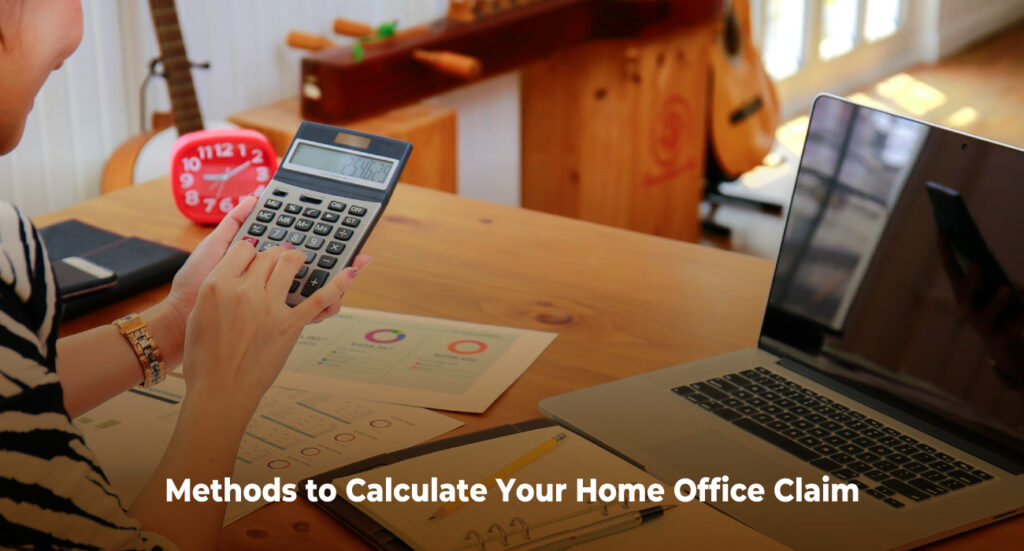A Complete Guide to Claiming Work-From-Home Expenses for 2024
The Australian Taxation Office (ATO) has recently issued a cautionary notice to all tax agents, highlighting the increased focus on work-from-home expenses for the 2024 tax year. The ATO has informed tax agents that they may receive review notifications for some of their clients based on the already lodged tax returns for the 2024 financial year. This heightened scrutiny underscores the importance of maintaining accurate records of work-from-home expenses.
In this article, we will cover everything you need to know about claiming work-from-home deductions. We’ll explain the two methods available for calculating these deductions, outline the types of expenses that can be included under each method, and detail the record-keeping requirements to ensure compliance with ATO guidelines.
Who Can Claim?
To claim work-from-home expenses, you need to make sure of a few things:
- You must be genuinely working from home to fulfill your job duties—not just doing small tasks like checking emails or answering the occasional call.
- Your work from home should be causing you to incur extra running costs, such as increased electricity or internet usage.
- You’ll need to keep records that prove these expenses were incurred due to working from home.

Types of Expenses You Can Claim
The ATO categorizes general household expenses into two main types:
- Occupancy Costs – These include expenses such as rent, mortgage interest, land tax, house insurance premium, council and water if you own your home.
Note – If you’re an employee working from home, you usually won’t be able to claim occupancy expenses like rent or mortgage interest.
- Running Expenses – These include ongoing costs like mobile phone bills, electricity, gas, internet, stationery, and office supplies. It also covers depreciation for assets such as office furniture, computers, and laptops.
Expenses You Can’t Claim
There are some things you can’t claim as a deduction, including:
- Coffee, tea, milk, and other everyday household items, even if your employer usually provides them at work.
- Costs related to your children’s education, like equipment you buy (for example, iPads or desks) or subscriptions for online learning.
- Items that your employer provides, such as a laptop or mobile phone.
- Expenses where your employer reimburses you for the cost.

Methods to Calculate Your Home Office Claim
There are two methods to claim home office expenses:
- Fixed Rate Method – This method uses a rate determined by the ATO, which can vary depending on the financial year. For example, before 2023, the rate was 52 cents per hour, but from 2023 onwards, it’s 67 cents per hour.
- Actual Cost Method – With this method, you claim the actual expenses you incur as a result of working from home.
Fixed Rate Method –
Claiming the Fixed Rate of 67 Cents Per Hour
You can claim 67 cents for each hour you work from home during the relevant income year. This rate covers additional running expenses like:
- Home and mobile internet or data costs
- Mobile and home phone usage
- Electricity and gas (for heating, cooling, and lighting)
- Stationery and computer consumables, like printer ink and paper
Additional Deductions
On top of the 67 cents per hour, you can also claim a separate deduction for work-related use of technology and office furniture, such as chairs, desks, computers, and bookshelves. These are usually considered depreciating assets, which means their value decreases over time. You can also claim the cost of repairs and maintenance for these items.
Record Keeping
To claim your work-from-home deduction using this method, you must:
- Keep a record of the actual hours you work from home throughout the entire income year. This could be a timesheet, roster, diary, or a similar document (estimates won’t cut it).
- Keep at least one record for each of the additional running expenses covered by the 67 cents per hour rate. For example, keep one quarterly bill for your electricity expenses and one receipt for your stationery purchases.

Actual Cost Method –
If you’re claiming work-from-home expenses based on actual costs, you’ll need to keep:
- Records of your working hours: You can either keep a record of the actual hours you worked from home over the entire income year (like a timesheet or spreadsheet) or track a continuous 4-week period that reflects your usual work-from-home pattern (a diary works well for this).
- Proof of additional expenses: Hold onto receipts, bills, and other documents that show the extra running costs you incurred while working from home.
- Evidence of your calculations: Make sure you keep records that explain how you worked out the amount of your deduction.
- For example, if you’re claiming electricity expenses, you’ll need to calculate the cost per kilowatt-hour for each appliance, piece of equipment, or light you use in your home office.
- If you use your phone for work, you should highlight work-related calls on your phone bills over a 4-week period to determine your annual usage percentage.
Conclusion
Work-from-home claims shouldn’t be complicated; however, a lack of information and guidance from a tax specialist can make this process more complex. Sometimes, individuals unintentionally inflate these claims without realising that the ATO is closely monitoring them. To ensure you’re making accurate and beneficial claims, while staying on the right side of the ATO, it’s essential to seek the right advice.
The tax specialists at Investax Group are here to help you navigate these claims with confidence. Contact us today for expert guidance and to maximise your work-from-home deductions without any unnecessary risks.
General Advice Warning
The material on this page and on this website has been prepared for general information purposes only and not as specific advice to any particular person. Any advice contained on this page and on this website is General Advice and does not take into account any person’s particular investment objectives, financial situation and particular needs.
Before making an investment decision based on this advice you should consider, with or without the assistance of a securities adviser, whether it is appropriate to your particular investment needs, objectives and financial circumstances. In addition, the examples provided on this page and on this website are for illustrative purposes only.Although every effort has been made to verify the accuracy of the information contained on this page and on our website, Investax Group, its officers, representatives, employees and agents disclaim all liability [except for any liability which by law cannot be excluded), for any error, inaccuracy in, or omission from the information contained in this website or any loss or damage suffered by any person directly or indirectly through relying on this information.





